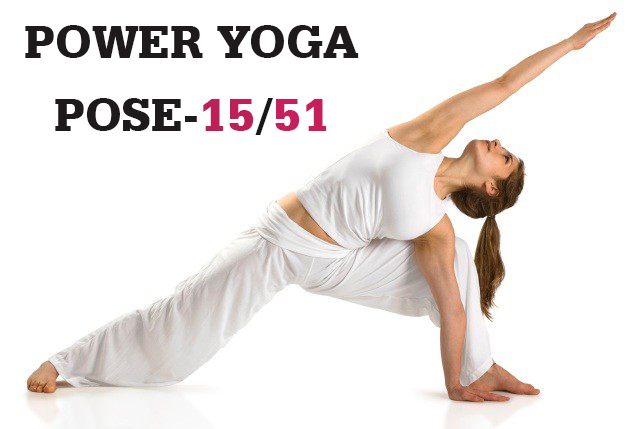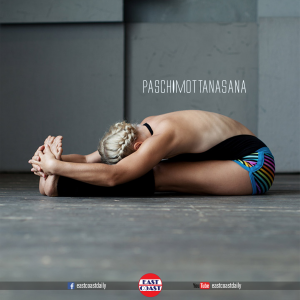
Paschimottanasana – The Forward Bend Pose
Paschimottanasana or the seated forward bend pose gives a complete stretch to the back muscles. In Sanskrit ‘Paschima’ means ‘west’ or ‘back’ and ‘uttana’ means ‘stretch’ or ‘extended’. Paschimottanasana gives an intense stretch to all the back muscles. This is the fifteenth Power Yoga Pose. A practitioner who performs Paschimottanasana gets a very flexible body. The back muscles are usually a little stiff in adults. Children have a flexible back and can do this easily. Paschimottanasana is done with a total forward bend in the sitting position, with the hands clutching the toes and the head or nose touching the gap between the legs. In the initial stages, one should only bend to the extent that one can. The hands may not reach the toes or the head need not touch the legs. That’s all right. With practice, the body can be made flexible enough to reach the final position.

How to do Paschimottanasana (The Forward Bend Pose)?
- Sit on the floor with legs stretched in front of you and place the hands on the thighs (You may start in the lying position too, as mentioned in step 9 and as shown in the above figure).
- Now raise both the hands above the shoulders and then bend forward as much as you can. Breathe out slowly while bending forward.
- Continue bending till your hands touch the legs. If your back is flexible enough, the hands can reach all the way to the toes. Grab the toes with your fingers and bend the head downwards till it touches the legs.
- In the initial stages, the hand may reach only up to the ankles or the lower leg. If so, then do the asana by holding the ankles (or lower legs) with your hands. Do not go beyond your limits.
- When you bend forward, you may not be able to touch the head to the legs. That is all right. Go as far as you can. Do not strain. With practice, you will be able to do the asana perfectly.
- Remain in the final position for as long as you are comfortable. Breathe normally and slowly while maintaining this position.
- To release the position, raise the head and come back to normal sitting position with the legs stretched.
- After performing Paschimottanasana, it is good to do any backward bending asana as a counter stretch. Alternatively, this asana can be used as a counter stretch for any of the backward bending asanas like Chakrasana, Dhanurasana, etc.
- This asana can also be practiced by starting in the lying down position with hands stretched behind the head. From this position, one has to slowly rise up to the sitting position as mentioned in step 1. Rest of the steps are the same.
Benefits
- Paschimottanasana gives a good stretch to the hamstring muscles and makes it flexible over time.
- Loosens up the hip joint and the muscles.
- Tones up organs of the abdomen like stomach, intestines, liver, kidneys, and pancreas. It can improve digestion.
- Is good for diabetic patients.
- Tones the pelvic region and is good for the female reproductive organs.
- Paschimottanasana activates the Swadhishtana and the Manipuraka chakra, the spiritual centers in the abdominal plexus and improves the vitality of the practitioner.
- It makes the back and the legs very flexible over a period of time.

Post Your Comments